I put the Simba Hybrid Duvet to the test to see if its 'cool tech' would stop me overheating in bed - here's what happened
As Ideal Home's Sleep Editor and a self-certified hot sleeper, I tested the Simba Hybrid Duvet on my own bed to see if it's 'cool tech' is worth the investment
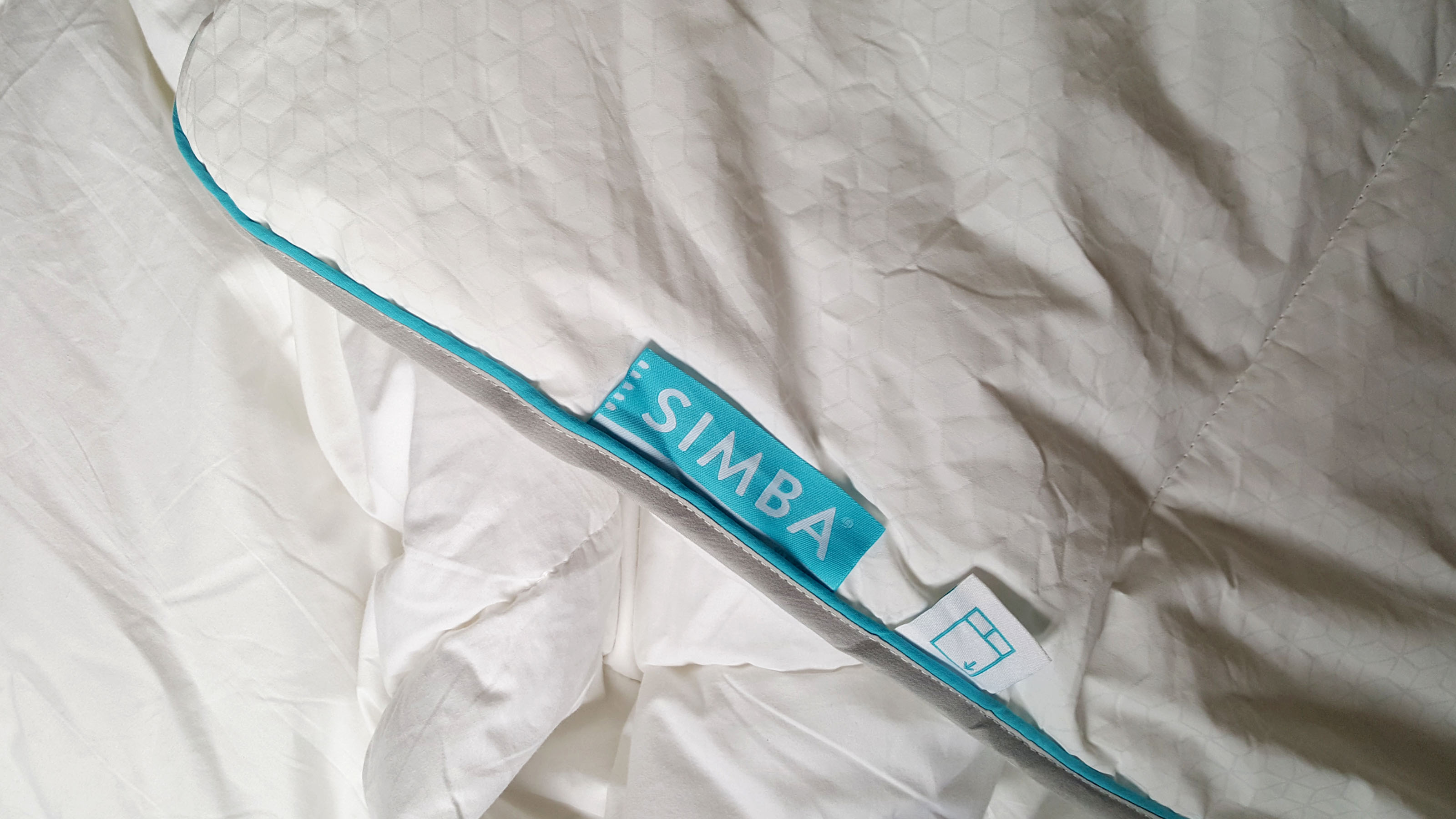
The Simba Hybrid Duvet is a decent synthetic duvet that's filled with machine-washable recycled polyester and has a nice drape on the bed. However, it's expensive for what it is, and, despite its 'cool-touch' tech, this hot sleeper still overheated.
-
+
Nice drape
-
+
Machine washable
-
+
Should be vegan-friendly
-
-
Expensive for a synthetic duvet
-
-
If you're a hot sleeper you may overheat
-
-
Only one 10.5 tog warmth option
-
-
'Stratos' finish feels a little stiff and makes the duvet a bit noisy
Why you can trust Ideal Home

I put the bestselling Simba Hybrid Duvet to the test on my own bed in this review to see how it fared compared to the best duvets on the market.
In a nutshell
During testing, I found the Simba Hybrid to be a decent duvet. It draped nicely on my bed and the duvet's filling and square-stitched panels meant it felt more premium than your average synthetic duvet. The Hybrid is also machine washable at 40°C and its recycled polyester fill and cotton cover should be vegan-friendly (although Simba makes no such claims, so that remains unconfirmed).
However, despite the temperature-regulating Stratos finish to one side of the duvet cover, as a hot sleeper, I still found the Simba Hybrid to lack breathability, and I regularly overheated under this duvet in the middle of the night.
I also found that Stratos finish made the duvet feel stiffer than I'd have liked and it created some noise when I changed position or tucked the duvet in around me on cold nights.
However, my biggest bugbear with the Simba Hybrid Duvet is its price. As of writing, the Simba Hybrid Duvet costs £199 for a double, and considering you can buy a good quality microfibre-filled duvet for around £40 to £60 for a double, that's a lot to pay for a polyester duvet.
Overall, if you're looking for a synthetic duvet and you can snap the Hybrid up when there's a Simba deal on offer or get it as part of one of Simba's bundles when you're buying a new mattress, then this duvet isn't a bad buy. However, I think there are far cheaper alternatives to consider if you're shopping when it's full price. More on those in my full verdict below.
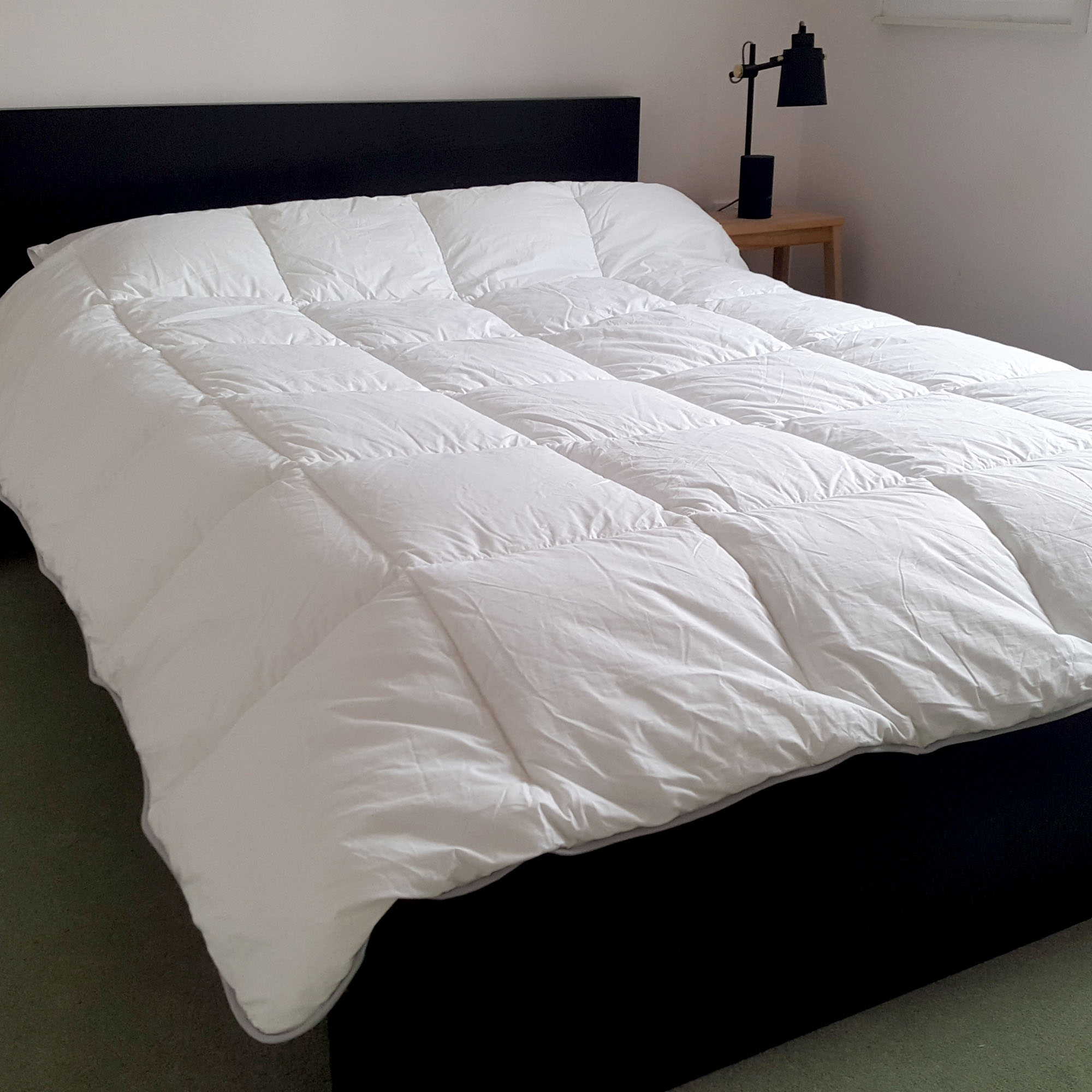
Simba Hybrid Duvet Specifications
- RRP: £139 / £199 / £249 / £259
- Sizes: single (135 x 200cm) / double (200 x 200cm) / king (225 x 220cm) / super king (260 x 220cm)
- Materials: cotton cover and polyester fill
- Care: machine wash at 40°C and low tumble dry
- Manufacturer sleep trial: 30-night
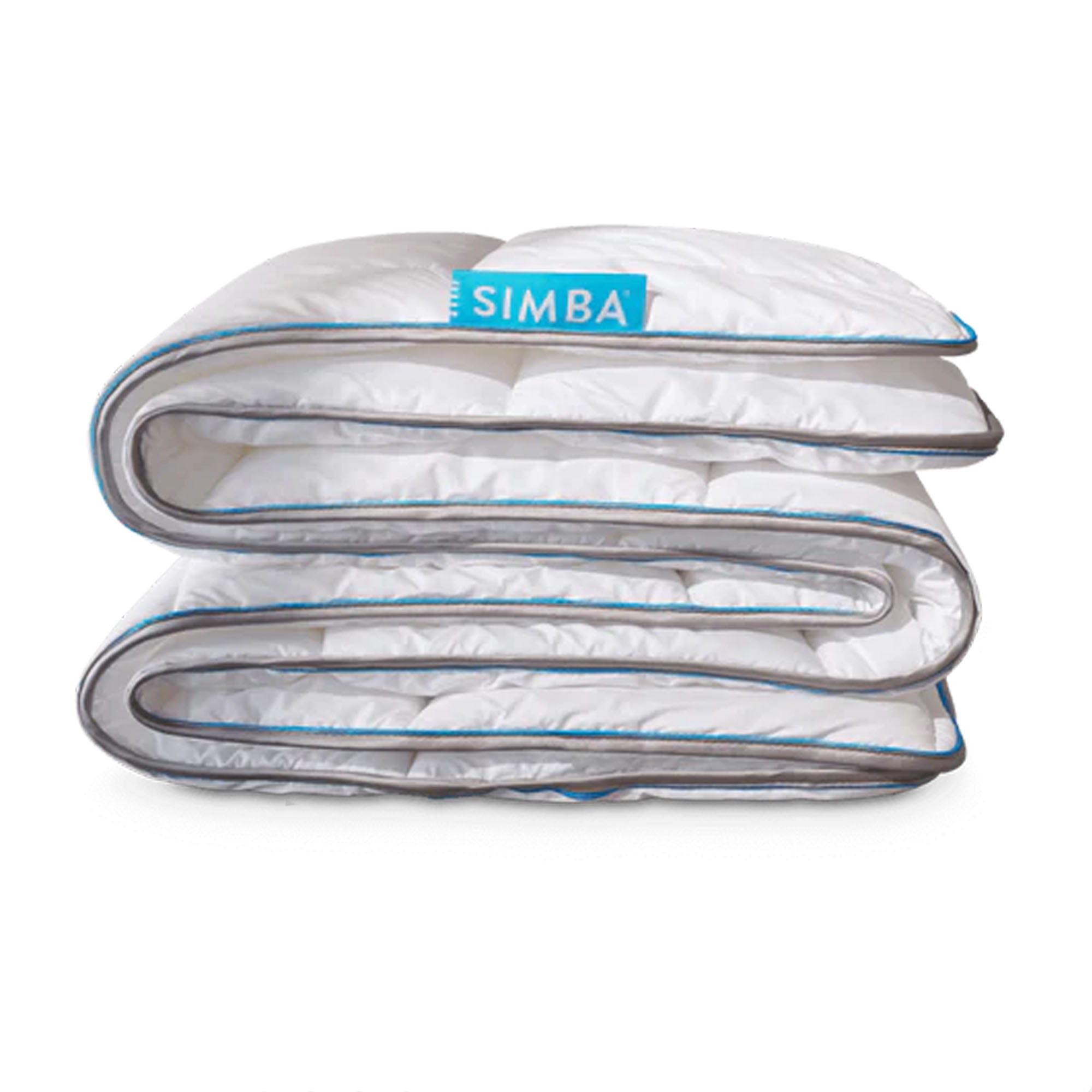

Feel
The Simba Hybrid Duvet is a synthetic duvet that features a recycled polyester filling and a cotton cover that has a 'Stratos' finish on one side. The brand says this Stratos ‘cool-touch’ tech is designed to help with temperature regulation and prevent overheating.
Synthetic duvets have some great plus points, namely affordability and ease of care, but they're not known for feeling particularly luxurious (especially compared to a good quality down-filled duvet). However, the Simba Hybrid Duvet does feel nicer than many synthetic options.
Simba doesn't specify which type of polyester it uses, preferring to refer to its fill as 'Simba Renew Bio', but the brand shares that it's made from recycled plastic bottle fibres (good news for the environment), and it feels very much like a good quality microfibre filling to me.
This is a good thing as it gives the duvet a nice feel when you scrunch it up and means that the duvet as a whole has a nice fluid drape on the bed. This is helped by the fact the duvet is stitched into squares (which Simba says also prevents clumping). It also meant that the duvet had enough flexibility to tuck in nicely around me at night to avoid draughts.
The only downside is the fact that the Stratos finish on one side of the duvet cover (more on that in a bit) does make the duvet feel a little bit stiff, and I found that stiffer layer made some rustling noise as I bunched the duvet up to get it into position around me.
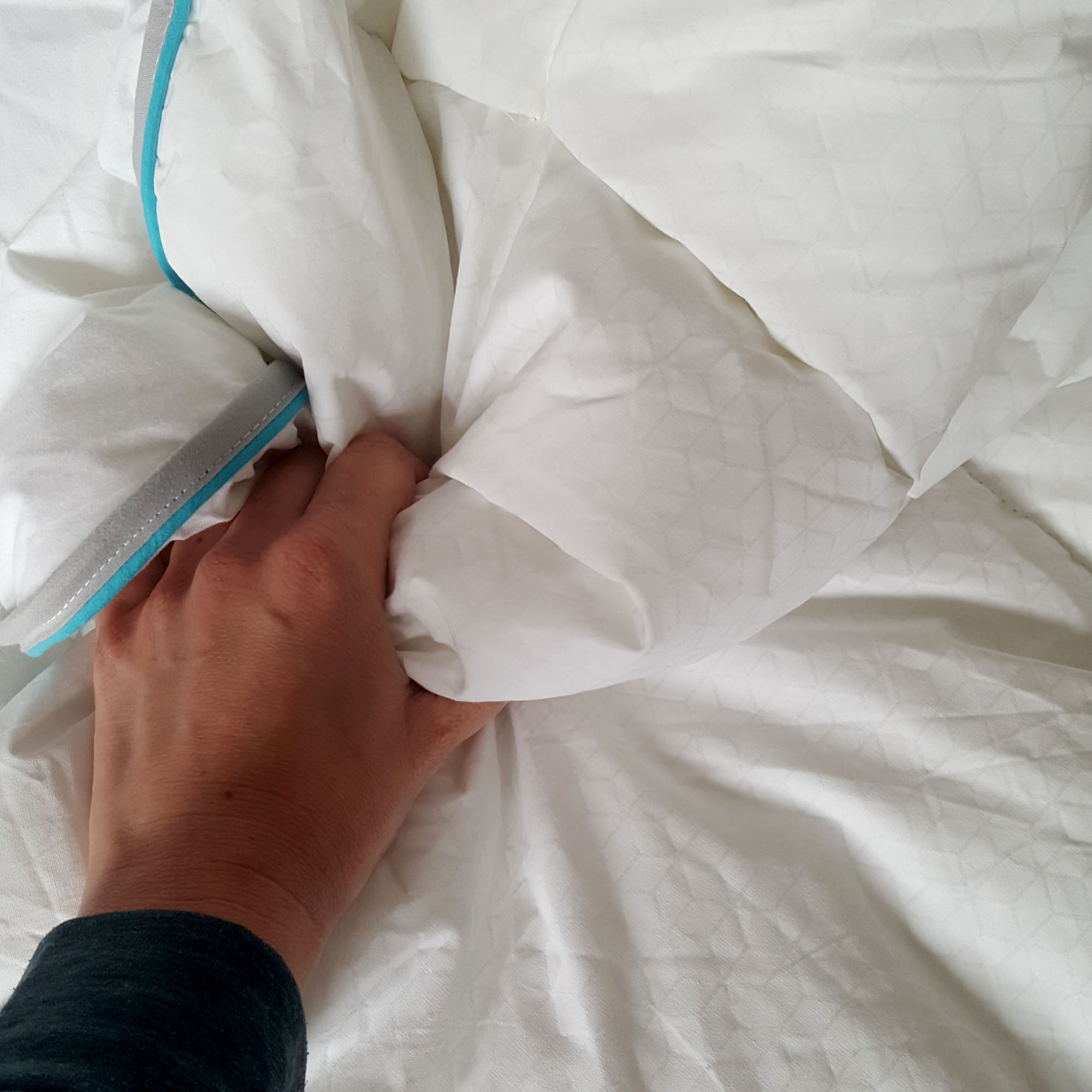
Temperature regulation
Similarly, synthetic duvets aren't known for their temperature regulation. This is because polyester lacks breathability and tends to reflect body heat back toward the sleeper. That's fine if you're a cold sleeper, but, if you're a hot sleeper, like me, then a synthetic duvet is usually the most likely to have you waking up in a hot and sticky mess at 3am.
Simba aims to combat this by adding a 'Stratos' finish to one side of the Hybrid duvet. The brand says that this ‘cool-touch' finish is 'similar to the tech that keeps astronauts cool in space' and will 'offer an instant, tangible coolness' that 'helps dissipate excess heat'.
On unpacking the Simba Hybrid Duvet I did immediately notice this 'cool touch' tech. The side of the duvet with the blue piping is covered in a hexagonal print and when I put my hand against it, it felt surprisingly cool to the touch. So much so that rather than being worried about overheating at night I was now a little worried about being too chilly!
Thankfully, having a duvet cover between myself and the duvet took away most of the chill factor and after 10 minutes or so I was soon pretty snuggly under the covers.
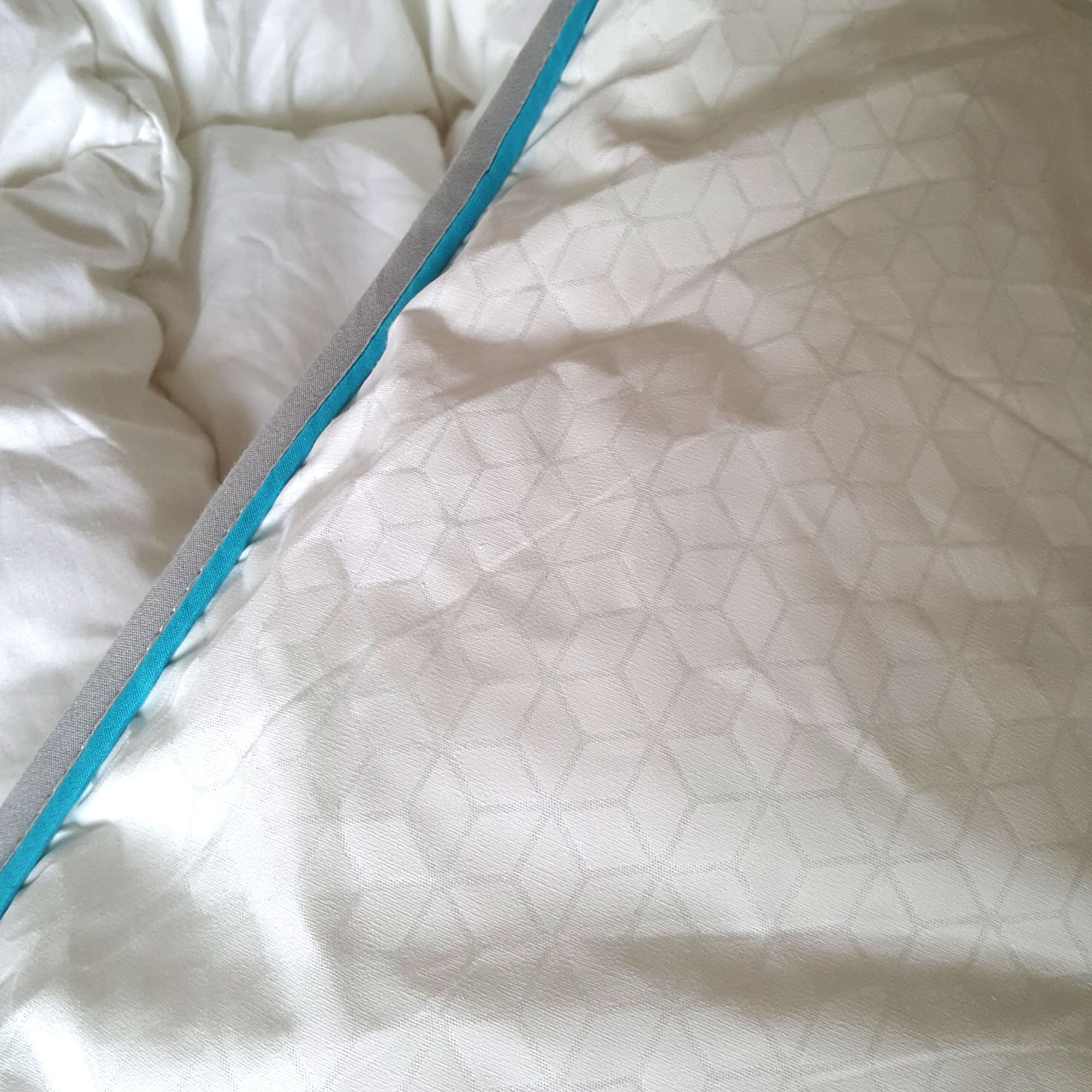
I tested this duvet in October, which is probably the best possible time for putting its 10.5 tog rating to the test, as a 10.5 tog duvet is a good all-rounder that should offer the ideal warmth for spring and autumn.
However, it's a shame that this is the only tog the Simba Hybrid duvet is available in, as it will likely be too warm for summer and too cool for winter. Most duvets come in a range of 4.5 tog and 7 tog options for summer, and a warmer 13.5 tog option for winter. You can opt for the more expensive Simba Hybrid 3-in-1 Duvet instead which offers a 3.5 tog and 7 tog duvet that combine to give 10.5 togs of warmth, but there's no warmer option.
However, thanks to the Stratos finish, perhaps I would find that a single 10.5 tog really could do it all.
Sadly, not quite so. As mentioned, I'm a hot sleeper, and having been lucky enough to test multiple duvets in my role as Sleep Editor for Ideal Home, I've found wool is the best duvet filling for me as I need the extra breathability it offers at night. True to form, despite the Stratos finish, I still woke up too hot and sweaty in the middle of the night under the polyester-filled Simba Hybrid Duvet.
Although I agree that the Stratos finish did deliver 'instant, tangible coolness' when I first laid my skin next to it, sadly, this didn't seem to translate into good temperature regulation all the way through the night.
If you're a cold sleeper you might fare better than I did, although I've still found wool to offer a cosier sleep than a synthetic duvet. Unfortunately, despite its added technology, the Simba Hybrid Duvet hasn't changed my mind on that.
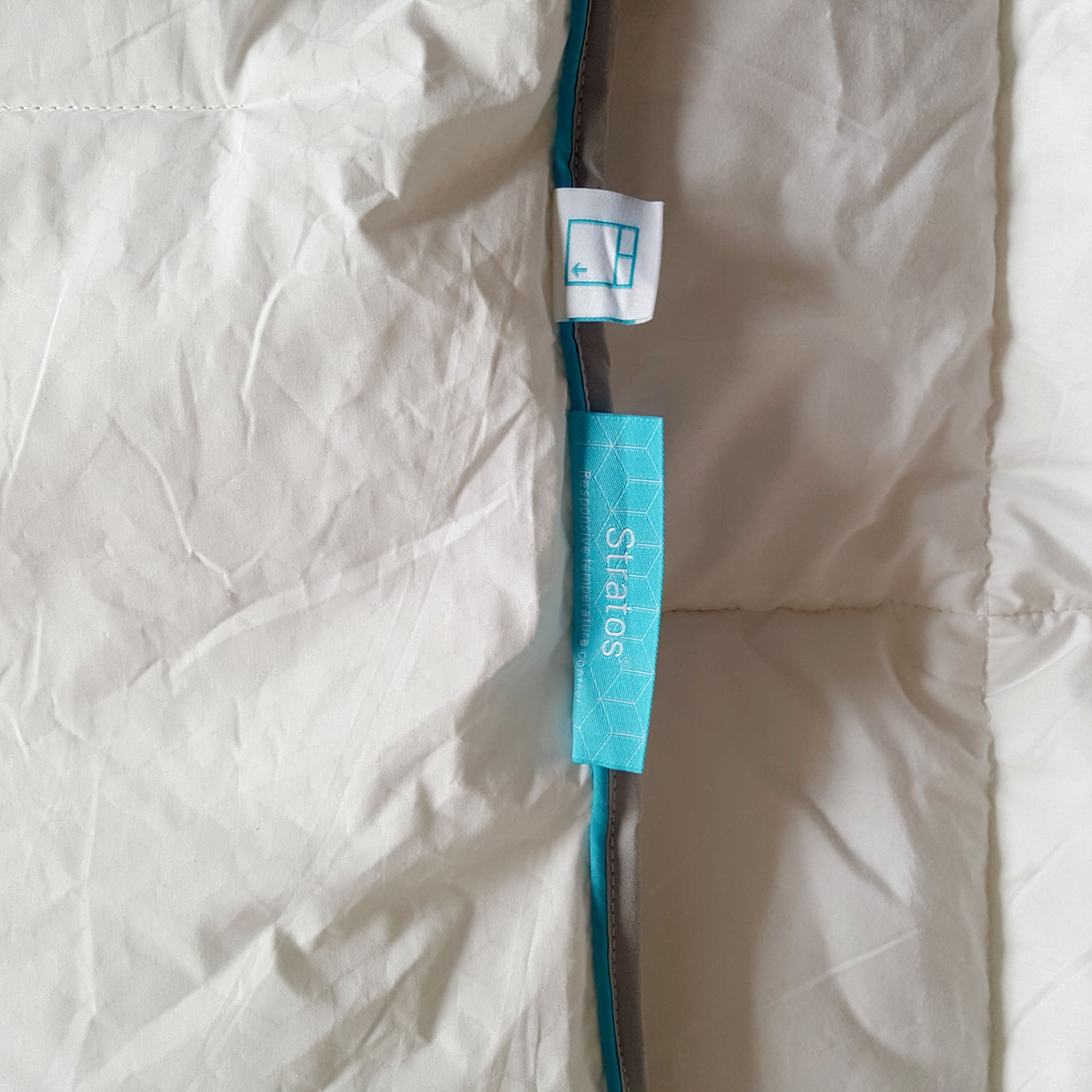
Ease of care
As mentioned, ease of care is one of the big plus points of opting for a synthetic duvet, and the Simba Hybrid Duvet is no exception.
This duvet can be machine-washed at 40°C (just check out our guide to how to wash a duvet before you do, and make sure you have a large enough washing machine) and tumble-dried on low. In my tests, it washed well and it dried quickly on the line or in the tumble dryer.
However, although it may be a more eco-friendly temperature to wash at, 40°C isn't quite as high a temperature as some synthetic duvets can be washed at. Many allow washing at 60°C which could be a bonus if you're worried about bed-wetting or are someone prone to allergies.
Likely it's the Stratos finish printed onto the Simba Hybrid Duvet's cover that limits the cleaning temperature a little.
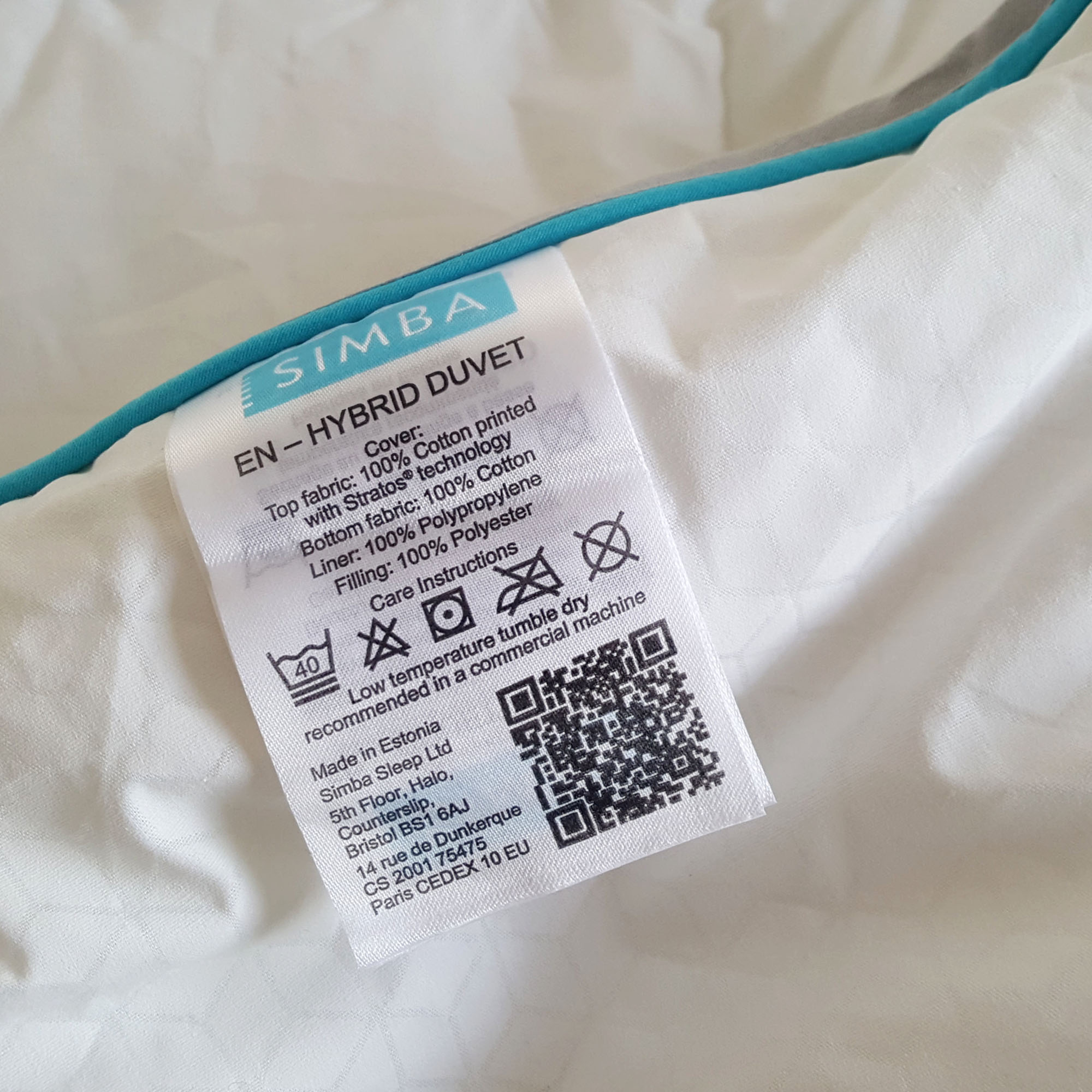
Value for money
As of writing, the Simba Hybrid Duvet costs £139 for a single, £199 for a double, £249 for a king-size, and £259 for a super king duvet. To my mind, that's a lot of money for a synthetic duvet.
Especially when you consider that you can buy a good quality synthetic duvet in a comparable 10.5 tog for between £30 and £50.
Yes, the Hybrid Duvet features that Stratos finish cover – which had mixed results in keeping me cool and fresh as it claims – but that's still a big jump in price compared to the competition.
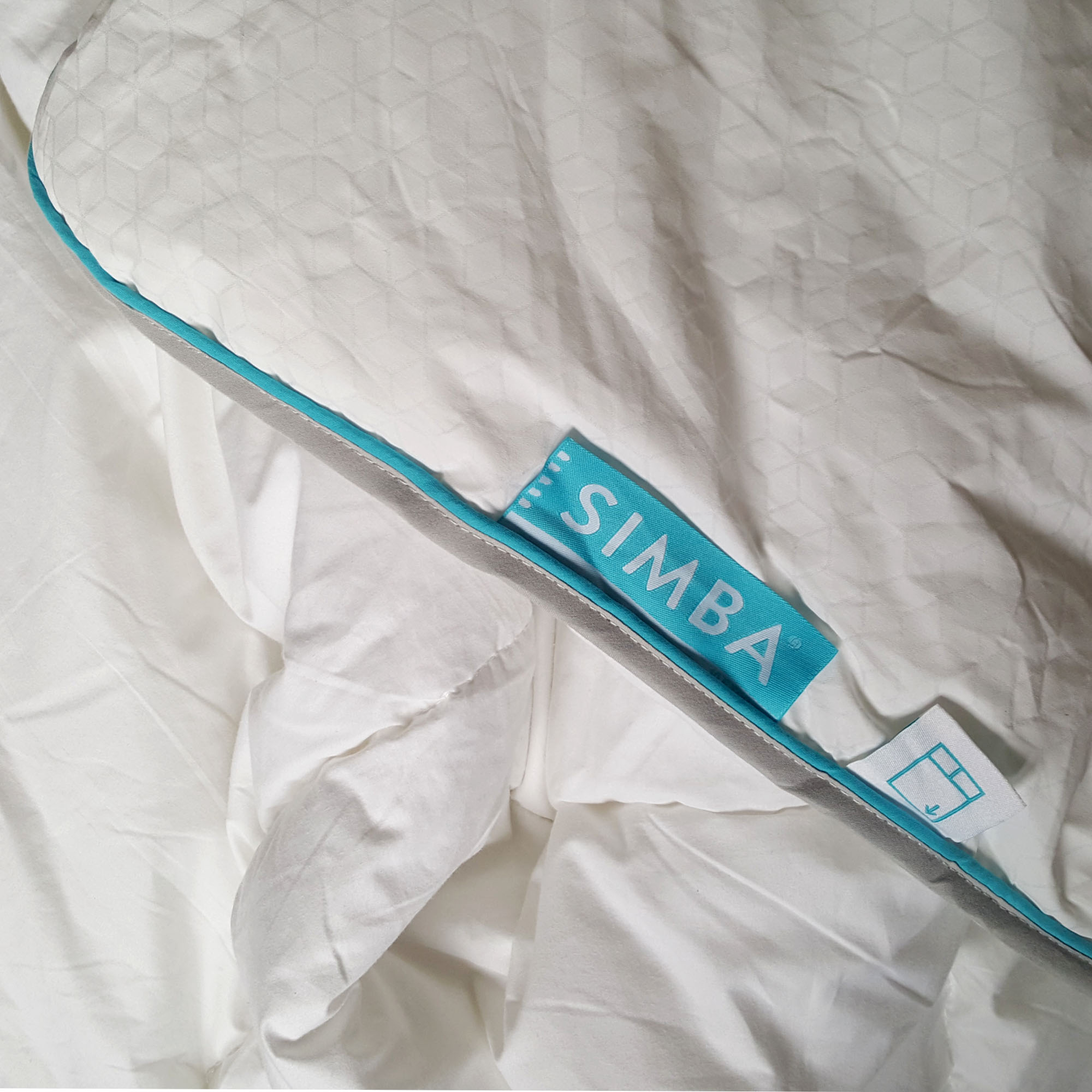
Verdict
All in all, I found the Simba Hybrid Duvet to be a decent duvet. If you're looking for a duvet that's easy to care for with a filling that doesn't rely on animal byproducts then you won't be disappointed by Simba's machine-washable polyester-filled design.
The Hybrid Duvet's filling may be synthetic, but it feels nicer and drapes better than your usual cheap synthetic duvet and its Stratos finish cover possibly does mean it causes a little less overheating than a synthetic duvet normally would.
However, although I usually think it's worth investing in a more expensive duvet for a better night's sleep, is it worth paying nearly five times more for the Simba Hybrid Duvet than you would for a decent high-street synthetic duvet like the M&S Supremely Washable Duvet or the John Lewis Synthetic Soft Touch Washable Duvet?
In this case, personally, I think not. Whereas a more expensive high-quality feather and down or wool duvet has always proved worth the extra investment in my experience, I can't really see how the materials used in the Simba Hybrid duvet justify its extremely high price point.
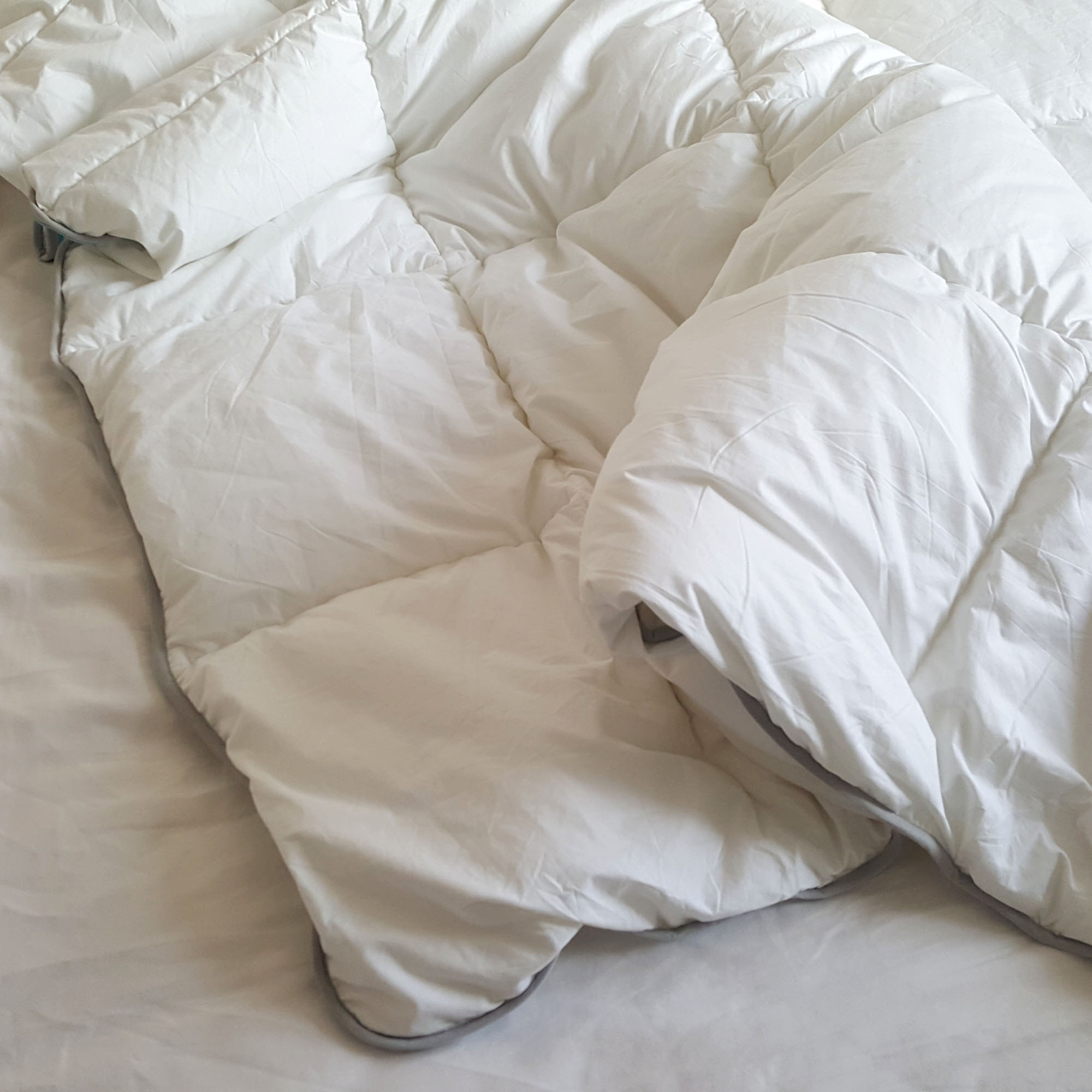
If you get this duvet included as part of one of Simba's deals when you're buying a new mattress then it makes a good addition to the bed. But if you're buying it at full price, then, to my mind at least, there are far more affordable synthetic duvets (such as the John Lewis and M&S options above) that you can opt for instead.
Plus, if you're a hot sleeper like me, I would say this duvet isn't for you. Instead, I'd recommend investing in a wool duvet, like the best-in-class Floks Luxury British Wool Duvet, the washable Woolroom Deluxe Washable Wool Duvet, or the budget-friendly Slumberdown Wonderful Wool Duvet. This hot sleeper found all of these wool options offered more breathability and better temperature regulation.
Similarly, if you're looking for a duvet that oozes luxury and will make you feel like you're snuggling up into cloud-like softness, then although the Simba Hybrid Duvet does feel nice, it can't compare to a top-of-the-range feather and down duvet like the Soak & Sleep Hungarian Goose Down Duvet, the scooms Hungarian Goose Down Duvet or The White Company Hungarian Goose Down Duvet.
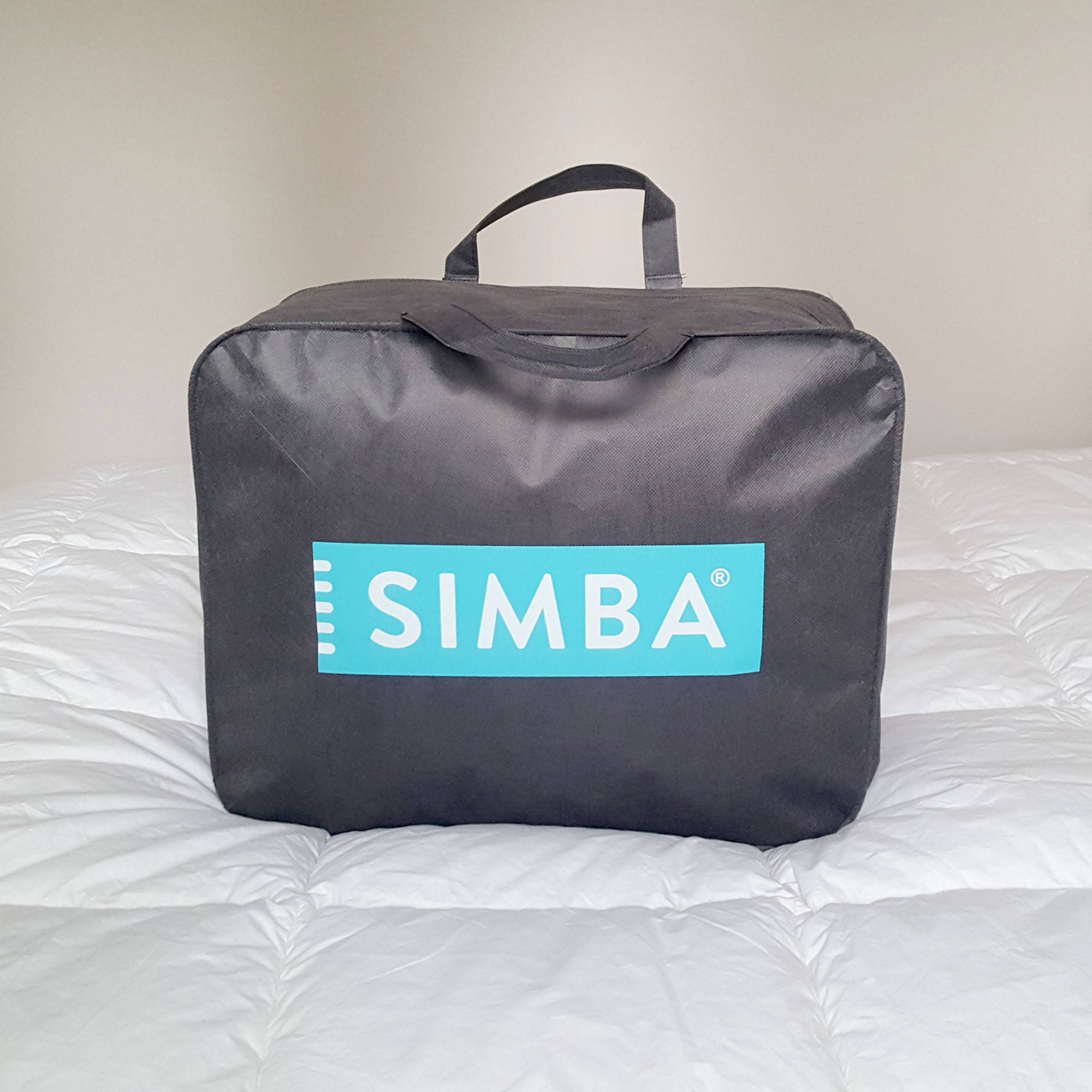
How I tested
I tested the Simba Hybrid duvet at home on my own bed, sleeping underneath it for a week to see how it performed.
Whilst testing I assessed the duvet's feel – this includes how malleable and squashy it feels to scrunch up in my hand, how well it tucked in around my body at night, if it made any noise when doing so, and how well it drapes on the bed.
I also assessed the duvet's temperature regulation and breathability. In doing so I made sure to keep my bedroom at the ideal bedroom temperature recommended by sleep scientists to help us sleep better – between 16°c and 18°c. I also made sure to use the same breathable cotton duvet cover I use to test every duvet we put through Ideal Home's duvet testing process.
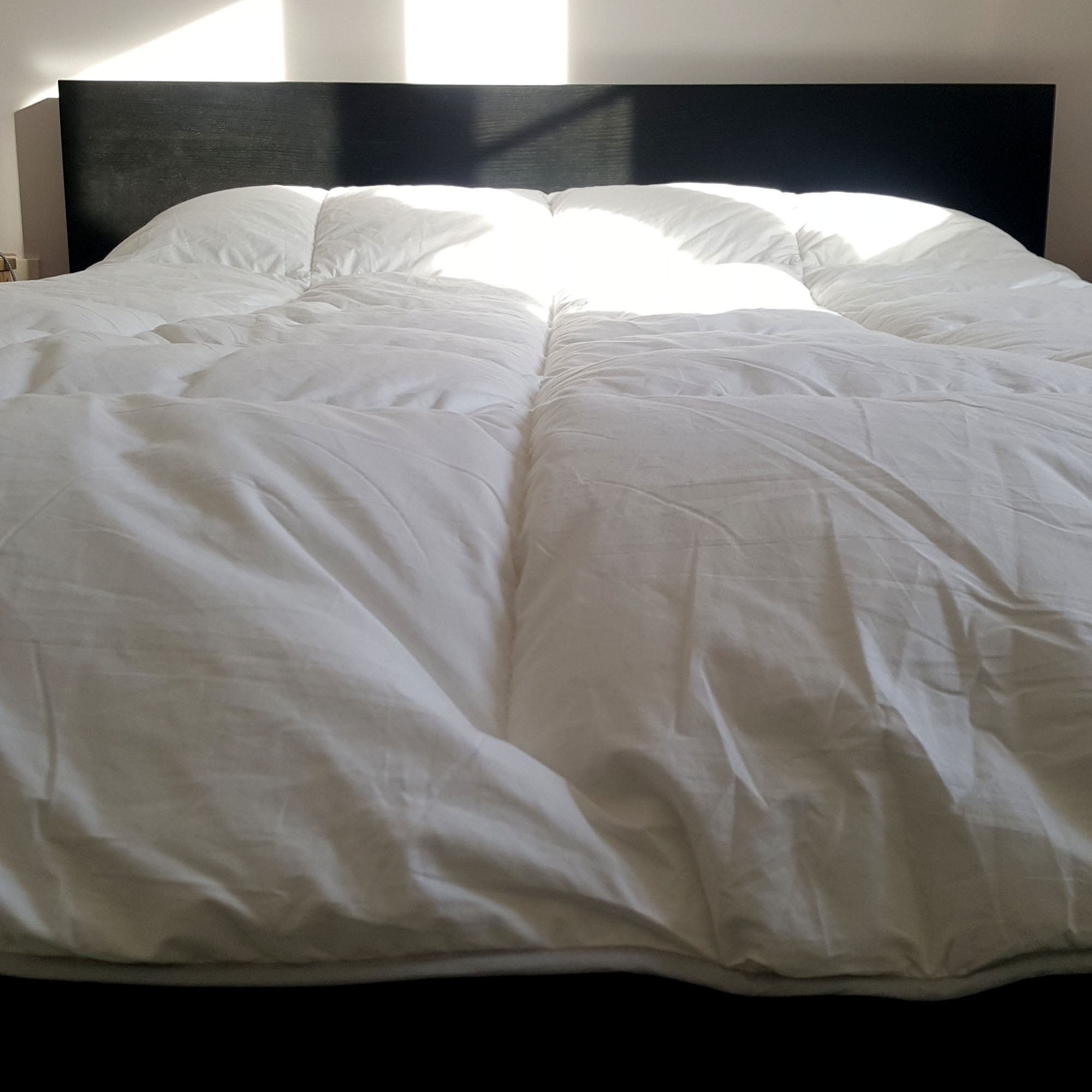
As a hot sleeper who is prone to overheating, I then set to snoozing to see if I slept comfortably throughout the night, or whether I woke up hot and sticky under the covers and had to fling a leg out of bed or throw the covers off myself to cool down. And, alternatively, if I woke up too cold.
I also assessed the duvet's ease of care, and where possible made sure to wash the duvet according to its care instructions to see if it came out of the washing machine looking and feeling as good as when it went in.
Lastly, I considered the duvet's price point and value for money, as well as researching any third-party reviews to see what a wider selection of owners think of the product, before giving the duvet a score out of five.

I'm Amy, and as Ideal Home's Sleep Editor I've spent the last four years testing sleep products by night and sharing my findings with our readers by day. That includes sleeping under more than twenty different duvets on my own bed to find the best-in-class. All in all, that's over 10,000 hours of at-home duvet testing under my belt.
Get the Ideal Home Newsletter
Sign up to our newsletter for style and decor inspiration, house makeovers, project advice and more.

Amy is Ideal Home’s Sleep Editor and the Ideal Home Certified Expert on Sleep. She's spent the last four years researching and writing about what makes for the best night’s sleep during the day and testing out sleep products to find the best-in-class by night. So far she’s clocked up over 10,000 hours of pillow, duvet, and mattress testing experience.
Our go-to for all things sleep-related, she’s slept on and under bestselling products from Simba, Emma, Hypnos, Tempur, Silentnight, Panda, and many many more.
As a hot sleeper, Amy is always on the lookout for the most breathable bedding, but she also leads a wider team of testers to ensure our product testing encompasses both hot sleepers, cold sleepers, front sleepers, back sleepers, side sleepers, and everything in-between.
-
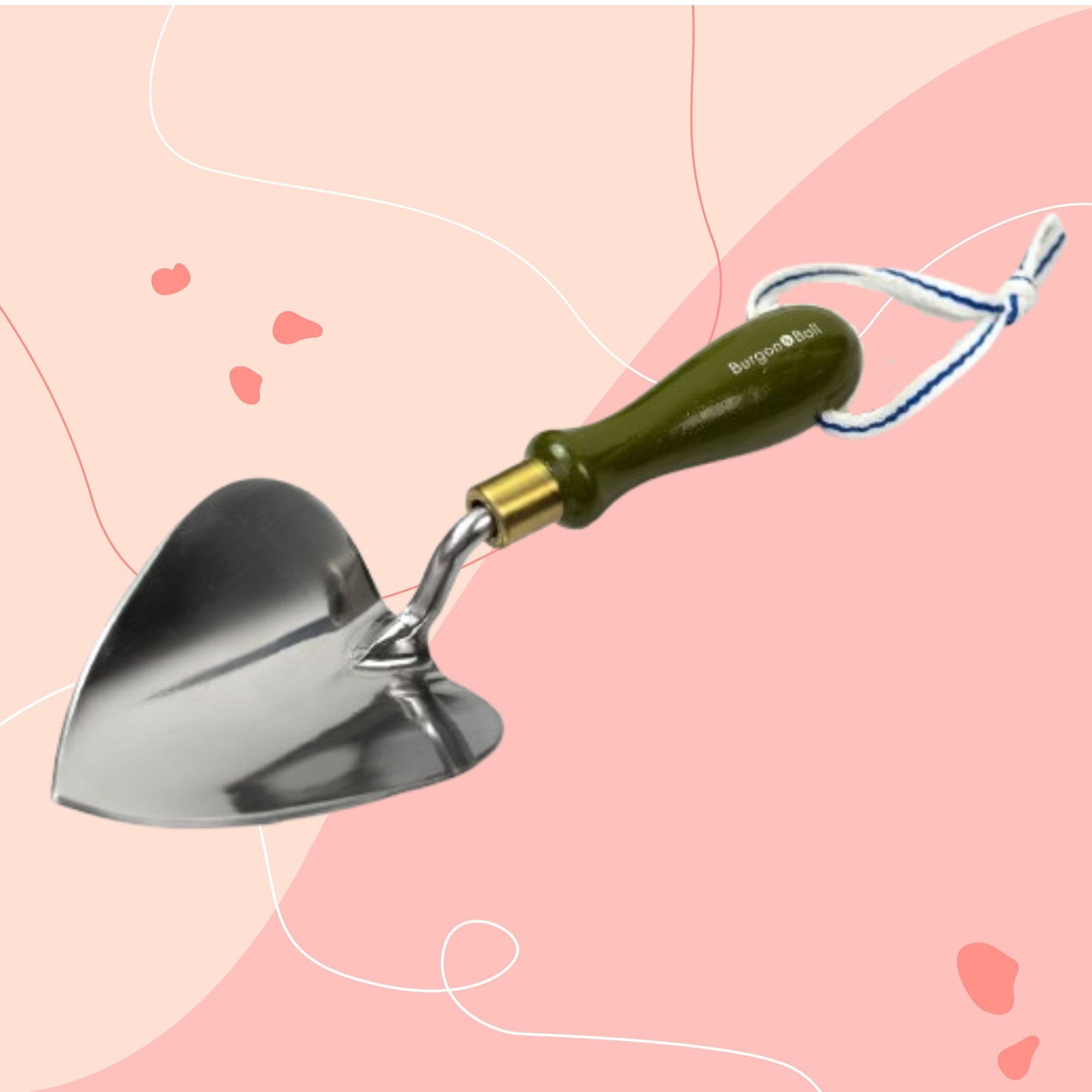 I was introduced to this clever heart-shaped trowel 2 months ago, and now I'll never garden without it – it's made planting seedlings so easy
I was introduced to this clever heart-shaped trowel 2 months ago, and now I'll never garden without it – it's made planting seedlings so easyIt's affordable and stylish
By Sophie King
-
 Have we just had a sneak peek at Ninja's plans for pastel air fryers? These new US-exclusive Crispi colours are giving us hope for the same in the UK
Have we just had a sneak peek at Ninja's plans for pastel air fryers? These new US-exclusive Crispi colours are giving us hope for the same in the UKNinja's spring colours collection i the US has sparked some serious appliance envy
By Molly Cleary
-
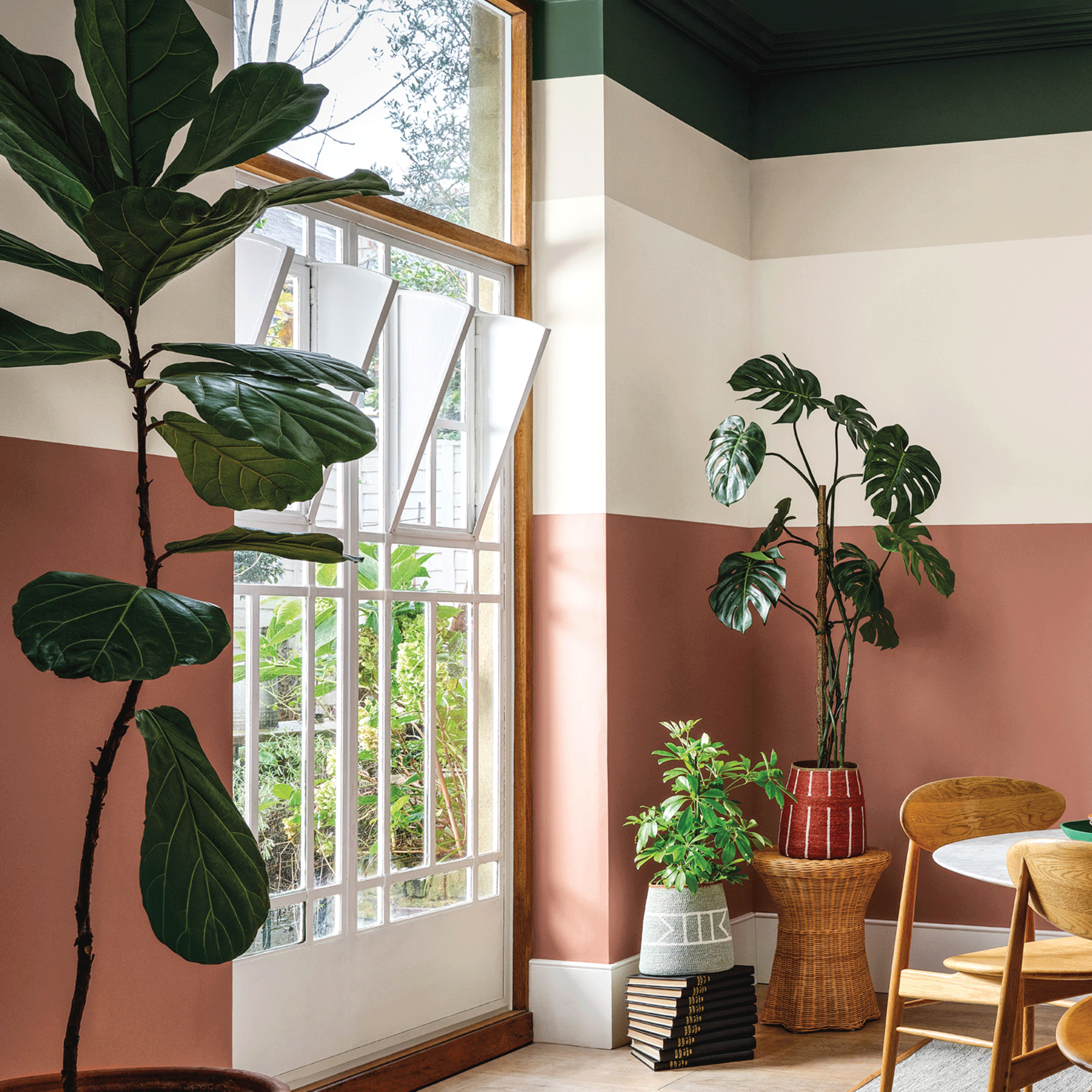 Crown Paint has launched new wall colours for the first time in three years, and changed how I think about neutral shades
Crown Paint has launched new wall colours for the first time in three years, and changed how I think about neutral shadesIs terracotta the ultimate neutral?
By Rebecca Knight